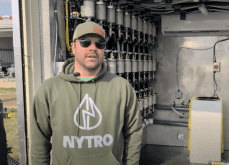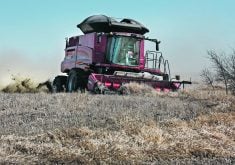By the early 1990s, farmers had solved most of the mystery of making zero till and direct seeding work for them in their own fields. The next challenge was to do it all with just one pass of the machinery.
Because of the proximity of fertilizer to the seed, nitrogen toxicity made this next step more complex.
According to the Soil Fertility Guide for Manitoba, to avoid seedling damage, the separation between seed and nitrogen fertilizer should be five to seven centimetres horizontally and the same distance vertically.
Read Also

VIDEO: Ag in Motion documentary launches second season
The second season of the the Western Producer’s documentary series about Ag in Motion launched Oct. 8.
According to Bourgault, dragging one tool that’s big enough to create that much separation eats up too much horsepower and diesel fuel. It also limits ground speed and leaves a rough surface.
But this is a minor problem compared to the seed bed shattering that occurs, according to Bourgault. A large seed-fertilizer opener disturbs so much soil that seed placement is compromised and the seed is deprived of a quality soil environment.
Bourgault’s solution, introduced in 1996, was the mid-row bander. This is a dedicated fertilizer opener placed between each pair of seed rows.
All fertilizer, except the nitrogen, goes down with the seed into a low-disturbance seed bed.
All nitrogen fertilizer, including high rates of anhydrous ammonia, goes down the mid-row opener, safely separated from the seed bed. For example, with 9.8 inch row spacing, the nitrogen fertilizer is placed 4.75 inches from the two closest seed rows.
The mid-row fertilizer bander has its own height adjustment, giving the operator the ability to accurately place the nitrogen at the desired depth, depending on soil conditions.















